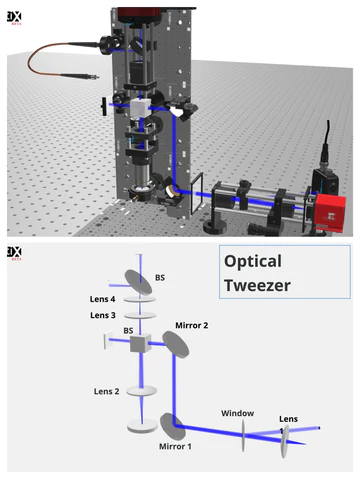The Dawn of Virtual Prototyping
In the rapidly evolving world of optical design, traditional methods of physical prototyping and testing are becoming increasingly time-consuming and costly. Enter optical design validation tools, a game-changing technology that has revolutionized the way we approach optical system development. These cutting-edge software solutions offer a virtual playground where designers can unleash their creativity, explore boundless possibilities, and validate their designs with unprecedented precision – all before a single physical component is ever manufactured.
Streamlining the Design Process
One of the most significant advantages of optical design validation tools is their ability to streamline the entire design process. By leveraging the power of advanced simulations and computational modeling, these tools eliminate the need for costly and time-consuming physical prototyping in the early stages of development. Designers can iterate through countless design variations, experiment with different materials and configurations, and analyze their performance under various environmental conditions – all within a virtual environment.
Imagine being able to visualize the behavior of light as it interacts with your optical system, observing the intricate patterns of refraction, reflection, and diffraction with microscopic precision. Optical design validation tools provide this invaluable insight, enabling designers to identify potential issues and optimize their designs for peak performance before committing to physical production.
Unleashing Innovation
Innovation thrives when boundaries are pushed and creativity is unleashed. Optical design validation tools empower designers to explore uncharted territories, pushing the limits of what was once thought possible. By removing the constraints of physical prototyping, these tools open up a realm of possibilities that would have been impractical or even impossible to explore through conventional means.
Imagine conceptualizing an optical system with unconventional geometries or incorporating cutting-edge materials that challenge the boundaries of traditional optical design. With virtual prototyping, designers can bring these ambitious visions to life, testing their feasibility and refining their designs until they achieve the desired performance characteristics.
Enhancing Collaboration and Communication
Optical design is often a collaborative endeavor, involving teams of experts from various disciplines. Optical design validation tools provide a common platform for seamless communication and collaboration among team members. By creating virtual prototypes that can be shared and analyzed by multiple stakeholders, these tools facilitate a deeper understanding of the design concepts and enable more informed decision-making.
Imagine being able to virtually walk through your optical system, exploring its intricacies from every angle, and sharing your findings with colleagues or clients across the globe. This level of transparency and collaboration not only enhances the design process but also fosters a culture of innovation and continuous improvement within organizations.
Embracing Sustainability
In an era where environmental consciousness is paramount, optical design validation tools offer a sustainable approach to product development. By minimizing the need for physical prototyping and reducing material waste, these tools contribute to a greener and more eco-friendly design process.
Imagine the impact of eliminating countless iterations of physical prototypes, each requiring the consumption of raw materials and generating waste. Optical design validation tools empower designers to optimize their designs virtually, minimizing their environmental footprint while still delivering high-performance optical systems.
Conclusion
The power of optical design validation tools extends far beyond mere simulations and virtual representations. These tools are catalysts for innovation, enabling designers to push the boundaries of what is possible in the realm of optical design. By streamlining the design process, fostering collaboration, and embracing sustainability, optical design validation tools are redefining the way we approach optical system development.
As technology continues to evolve and computational capabilities expand, the potential of these tools will only grow, unlocking new frontiers in optical design and paving the way for groundbreaking advancements in fields ranging from imaging and sensing to telecommunications and energy. Embrace the power of optical design validation tools, and embark on a journey where creativity knows no bounds, and innovation becomes the driving force behind every design.










